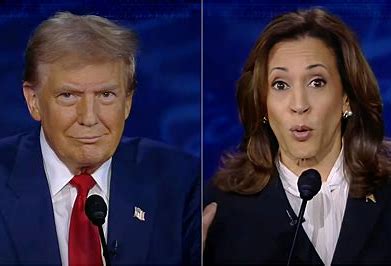As the 2024 US Presidential Election approaches, the race between Democratic candidate Kamala Harris and Republican contender Donald Trump is growing more competitive, with new polls indicating an increasingly close contest. Kamala Harris, who entered the presidential race just a few months ago, has experienced a surge in popularity across key regions, positioning her as a formidable rival to Trump. A recent report from The New York Times suggests that Harris could potentially secure a narrow victory, with polls pointing to a 270-268 result in her favor—just two electoral votes ahead of Trump.
The data comes from a series of post-debate polls conducted by The New York Times/Siena College in the battleground states of Michigan, Ohio, and Wisconsin. These states are critical to the outcome of the election, and the latest polling indicates that voter sentiment in these regions has shifted significantly. While Trump continues to maintain a strong base of support, Harris has made notable gains, narrowing the gap and positioning herself within striking distance of victory.
This tight margin is a marked departure from earlier polling trends, which initially showed Trump with a more comfortable lead in several regions. Harris’ rise in popularity is a key factor driving this shift, as she continues to appeal to voters across a range of demographic groups, including women, young voters, and minorities. Her platform, which focuses on issues like healthcare, economic equity, and social justice, has resonated with many Americans, contributing to her increased support.
On the other hand, Donald Trump remains a dominant figure among Republican voters, drawing on his previous tenure as president and his promises to restore economic growth and reduce government regulations. His strong base of support, particularly in rural areas and among conservative voters, continues to be a significant factor in the race.
The new polling data from The New York Times highlights the evolving nature of the 2024 election, which is shaping up to be one of the closest and most fiercely contested races in recent history. With just a narrow lead in electoral votes, the final outcome may come down to a handful of swing states, making every vote count.
As the election season progresses, both candidates will likely intensify their campaigns, focusing on key issues that resonate with undecided voters in the battleground states. With the stakes higher than ever, the 2024 presidential election is expected to be a critical moment in American politics, with the potential to reshape the country’s future for years to come.

